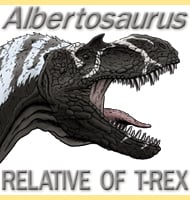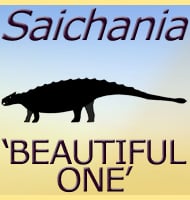In Depth
With an average size of up to four meters long Clidastes was tiny when compared to the larger mosasaurs such as Mosasaurus and Tylosaurus (the latter of which is actually considered to have been a potential predator of Clidastes). The small size of Clidastes suggests that it specialised in hunting smaller and swifter prey like fish that would have required a predator to have a more agile body. Additionally Clidastes was probably a hunter of the shallows and coastal regions where a greater variety of small prey would have been available, as well as a degree of natural cover from larger oceanic predators.
Clidastes has all the hall marks of a predatory animal with a snout that resembled a narrow triangle when viewed from above that allowed the eyes to be angled to look more forwards than out to the sides. The jaws were also full of sharp pointed teeth that were recurved, something that means the tips of the crowns pointed towards the back of the mouth. This would make the teeth similar in function to hooks since as soon as they penetrated the body of a prey animal, they would hook it in place so that it could not lift and slide off them, no matter how much the prey struggled. Also like with other mosasaurs, Clidastes had a second set of teeth on the palate of the upper jaws that gave further grip as Clidastes worked its body over larger prey so that it could more easily be swallowed.
Further Reading
– On new species of extinct reptiles. – Proceedings of the Academy of Natural Sciences of Philadelphia 20: 181. – E. D. Cope – 1868. – On the reptilian orders, Pythonomorpha and Streptosauria. – Proceedings of the Boston Society of Natural History 12: 250–266. – E. D. Cope – 1869. – [Remarks on Poikilopleuron valens, Clidastes intermedius, Macrosaurus proriger, Baptemus wyomingensis, and Emys stevensonianus]. – Proceedings of the Academy of Natural Sciences of Philadelphia 22(1):3-5. – J. Leidy – 1870. – Clidastes Cope, 1868 (Reptilia, Sauria): proposed designation of Clidastes propython Cope, 1869 as the type species. – Bulletin of Zoological Nomenclature 49: 137–139. – C. R. Kiernan – 1992. – Opinion 1750. Clidastes Cope, 1868 (Reptilia, Sauria): C. propython Cope, 1869 designated as the type species. – Bulletin of Zoological Nomenclature 50: 297. – ICZN – 1993. – Ctenochelys stenoporus (Hay, 1905) (Testudines: Toxochelyidae) and Clidastes sp. (Squamata: Mosasauridae) from the Upper Cretaceous of NW-Germany. – Studia Palaeocheloniologica 4:129-142. – H. -V. Karl & C. J Nyhuis – 2012.










